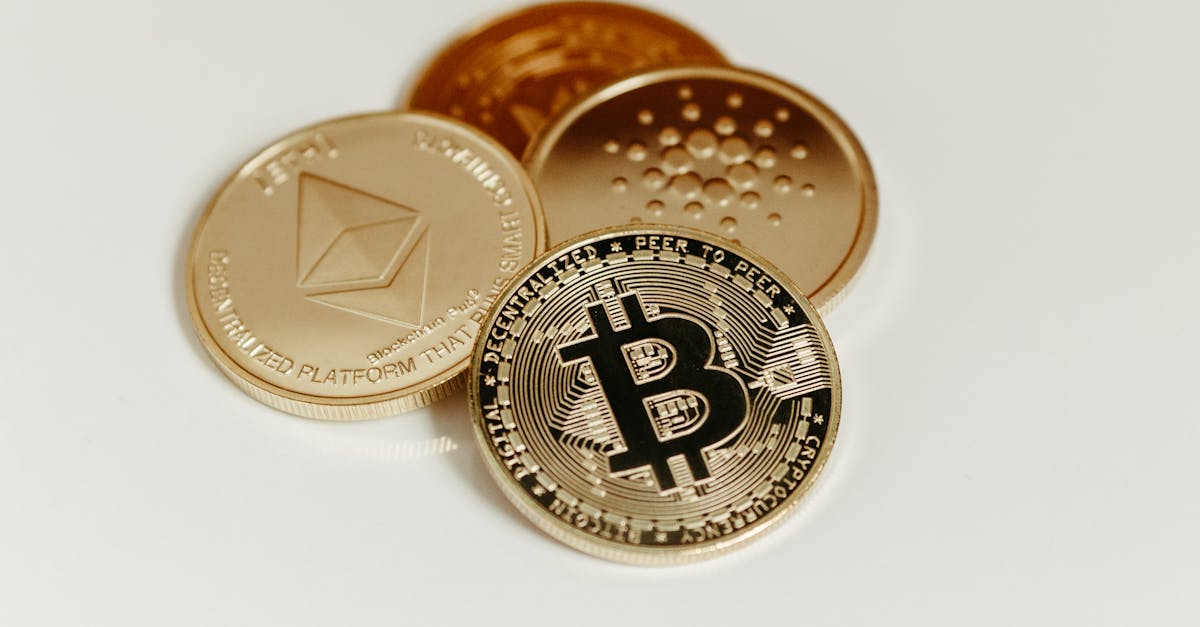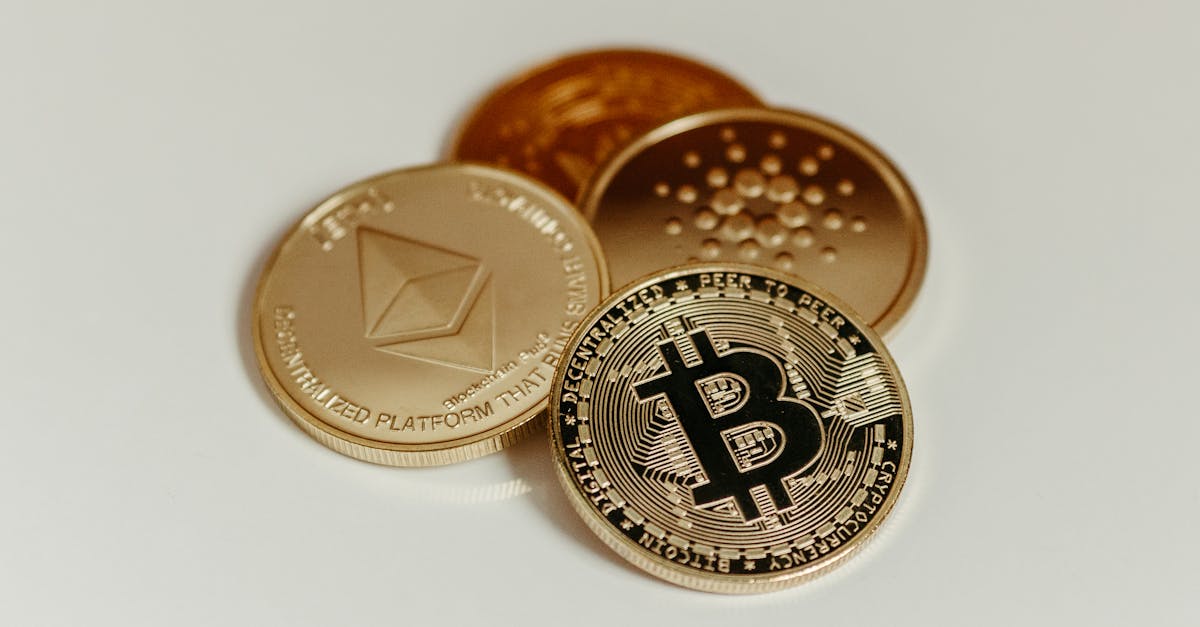5 Best Cryptocurrencies
Introduction
In recent years, cryptocurrencies have revolutionized the financial landscape, offering decentralized, digital alternatives to traditional fiat currencies. What began as an experimental concept with Bitcoin in 2009 has now grown into a global phenomenon, with thousands of digital coins competing for market share. However, only a select few have managed to consistently capture the attention of investors, developers, and enthusiasts. These cryptocurrencies have not only demonstrated resilience in a volatile market but have also introduced groundbreaking innovations that are reshaping industries beyond finance. This article delves deeper into the top five cryptocurrencies—Bitcoin, Ethereum, Binance Coin, Cardano, and Solana—exploring their unique features, use cases, and the reasons behind their prominence in the ever-evolving crypto ecosystem.
Advertisement
Bitcoin
Bitcoin, often referred to as the "king of cryptocurrencies," remains the most recognized and widely adopted digital currency. Launched in 2009 by the pseudonymous Satoshi Nakamoto, Bitcoin introduced the world to blockchain technology—a decentralized ledger that records transactions across a network of computers. Unlike traditional currencies controlled by central banks, Bitcoin operates on a peer-to-peer network, eliminating the need for intermediaries like banks or payment processors.
One of Bitcoin's most defining features is its capped supply of 21 million coins, a design choice that mimics the scarcity of precious metals like gold. This scarcity has earned Bitcoin the moniker "digital gold," as it is increasingly seen as a store of value and a hedge against inflation. Over the years, Bitcoin has weathered numerous market cycles, regulatory challenges, and technological debates, solidifying its position as the cornerstone of the cryptocurrency market. Its decentralized nature, combined with its widespread acceptance as a payment method and investment asset, ensures that Bitcoin remains at the forefront of the crypto revolution.

David McBee/Pexels
Advertisement
Ethereum
While Bitcoin laid the groundwork for decentralized digital currencies, Ethereum expanded the possibilities of blockchain technology. Launched in 2015 by Vitalik Buterin and a team of developers, Ethereum is more than just a cryptocurrency—it is a decentralized computing platform that enables the creation of smart contracts and decentralized applications (dApps). Smart contracts are self-executing agreements with the terms directly written into code, eliminating the need for intermediaries and reducing the risk of fraud.
Ethereum's native cryptocurrency, Ether (ETH), fuels these operations, serving as both a medium of exchange and a means to pay for computational services on the network. Ethereum's versatility has made it the backbone of numerous blockchain-based innovations, including decentralized finance (DeFi) platforms, non-fungible tokens (NFTs), and even entire ecosystems of interconnected dApps. Despite facing challenges such as network congestion and high gas fees, Ethereum continues to evolve, with its transition to Ethereum 2.0—a proof-of-stake consensus mechanism—promising greater scalability, energy efficiency, and security.

David McBee/Pexels
Advertisement
Binance Coin
Binance Coin (BNB) is the native cryptocurrency of Binance, one of the largest and most influential cryptocurrency exchanges in the world. Launched in 2017, BNB was initially created to provide users with discounted transaction fees on the Binance platform. However, its utility has since expanded far beyond fee discounts. Today, BNB is used for a wide range of applications within the Binance ecosystem, including staking, participating in token sales, and powering Binance Smart Chain (BSC)—a blockchain platform designed for building decentralized applications.
Binance Smart Chain has emerged as a formidable competitor to Ethereum, offering faster transaction speeds and lower fees. This has attracted a growing number of developers and users, further boosting the demand for BNB. Additionally, Binance's aggressive expansion into various sectors, such as decentralized finance, NFTs, and even real-world partnerships, has cemented BNB's position as one of the most versatile and widely used cryptocurrencies in the market.

Jonathan Borba/Pexels
Advertisement
Cardano
Cardano, founded by Charles Hoskinson—one of the co-founders of Ethereum—was designed with a focus on sustainability, scalability, and interoperability. Launched in 2017, Cardano distinguishes itself through its rigorous, research-driven approach to blockchain development. Unlike many other cryptocurrencies that rely on proof-of-work (PoW) consensus mechanisms, Cardano uses a proof-of-stake (PoS) system called Ouroboros. This not only makes the network more energy-efficient but also allows for greater scalability and security.
Cardano's layered architecture separates the settlement layer, which handles transactions, from the computation layer, which manages smart contracts. This design enhances flexibility and enables the platform to adapt to future technological advancements. Cardano's emphasis on peer-reviewed research and formal verification ensures that its protocols are robust and secure, making it an attractive option for enterprises and governments looking to leverage blockchain technology. With ongoing developments such as the Alonzo upgrade, which introduced smart contract functionality, Cardano is poised to play a significant role in the next wave of blockchain innovation.

Jonathan Borba/Pexels
Advertisement
Solana
Solana, launched in 2020, has quickly risen to prominence as one of the fastest and most scalable blockchain platforms. Designed to address the limitations of earlier blockchains, such as slow transaction speeds and high fees, Solana boasts a unique architecture that combines proof-of-stake (PoS) with a novel consensus mechanism called Proof of History (PoH). This enables the network to process thousands of transactions per second (TPS) at a fraction of the cost of competitors like Ethereum.
Solana's high throughput and low latency have made it a favorite among developers building decentralized applications, particularly in the DeFi and NFT spaces. Its ecosystem has seen rapid growth, with projects ranging from decentralized exchanges (DEXs) to gaming platforms and social networks. Despite facing occasional network outages and criticism over centralization concerns, Solana's performance and scalability continue to attract both developers and investors, positioning it as a key player in the blockchain space.

Bastian Riccardi/Pexels
Advertisement
Why These Cryptocurrencies Shine
The success of Bitcoin, Ethereum, Binance Coin, Cardano, and Solana can be attributed to their ability to address specific needs within the blockchain ecosystem. Bitcoin serves as a decentralized store of value and a hedge against inflation, while Ethereum provides a platform for programmable money and decentralized applications. Binance Coin offers unparalleled utility within the Binance ecosystem, and Cardano focuses on sustainability and scalability through its research-driven approach. Solana, on the other hand, excels in high-performance applications, making it ideal for developers seeking speed and efficiency.
These cryptocurrencies have not only captured the imagination of investors but have also driven significant technological advancements. Their ability to adapt to changing market dynamics and user demands has ensured their continued relevance in an increasingly competitive landscape.

RDNE Stock project/Pexels
Advertisement
Risks and Considerations
Despite their impressive track records, investing in cryptocurrencies is not without risks. The market is notoriously volatile, with prices often experiencing dramatic swings in short periods. Regulatory uncertainty remains a significant concern, as governments around the world grapple with how to classify and regulate digital assets. Additionally, technical challenges such as network congestion, security vulnerabilities, and competition from newer projects can impact the long-term viability of even the most established cryptocurrencies.
For potential investors, it is essential to approach the crypto market with caution. Conducting thorough research, understanding the underlying technology, and assessing one's risk tolerance are critical steps before making any investment decisions. Diversification and a long-term perspective can also help mitigate some of the risks associated with this nascent asset class.

RDNE Stock project/Pexels
Advertisement
Future Prospects
The future of cryptocurrencies is both exciting and uncertain. As blockchain technology continues to mature, its applications are expected to extend far beyond finance. Industries such as healthcare, supply chain management, real estate, and even governance are exploring ways to leverage blockchain for greater transparency, efficiency, and security. The five cryptocurrencies discussed in this article are well-positioned to drive and benefit from these innovations, thanks to their robust architectures and active developer communities.
Moreover, the ongoing evolution of these platforms—such as Ethereum's transition to Ethereum 2.0, Cardano's smart contract capabilities, and Solana's scalability improvements—suggests that they will remain at the forefront of the blockchain revolution. As adoption grows and new use cases emerge, these cryptocurrencies could play a pivotal role in shaping the future of the global economy.

Ann H/Pexels
Advertisement
Conclusion
In summary, while the cryptocurrency market is crowded with thousands of digital assets, Bitcoin, Ethereum, Binance Coin, Cardano, and Solana have distinguished themselves as leaders through their innovative features, practical applications, and strong communities. Each of these cryptocurrencies caters to different aspects of blockchain technology, offering unique value propositions that resonate with diverse user needs.
For investors and enthusiasts, understanding the strengths, risks, and potential of these digital assets is crucial for navigating the complex and rapidly evolving crypto landscape. As blockchain technology continues to disrupt traditional industries and unlock new possibilities, these five cryptocurrencies are likely to remain central to the future of finance and beyond. Their ongoing development and adoption underscore the transformative power of decentralized technologies, heralding a new era of innovation and opportunity.

RDNE Stock project/Pexels
Advertisement





